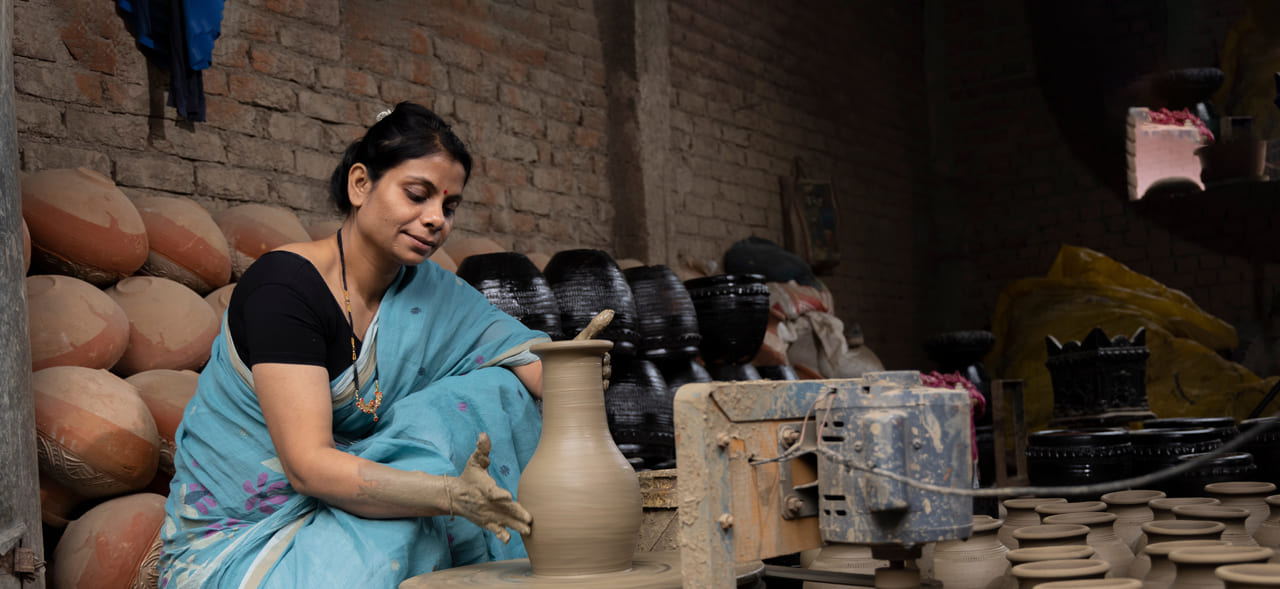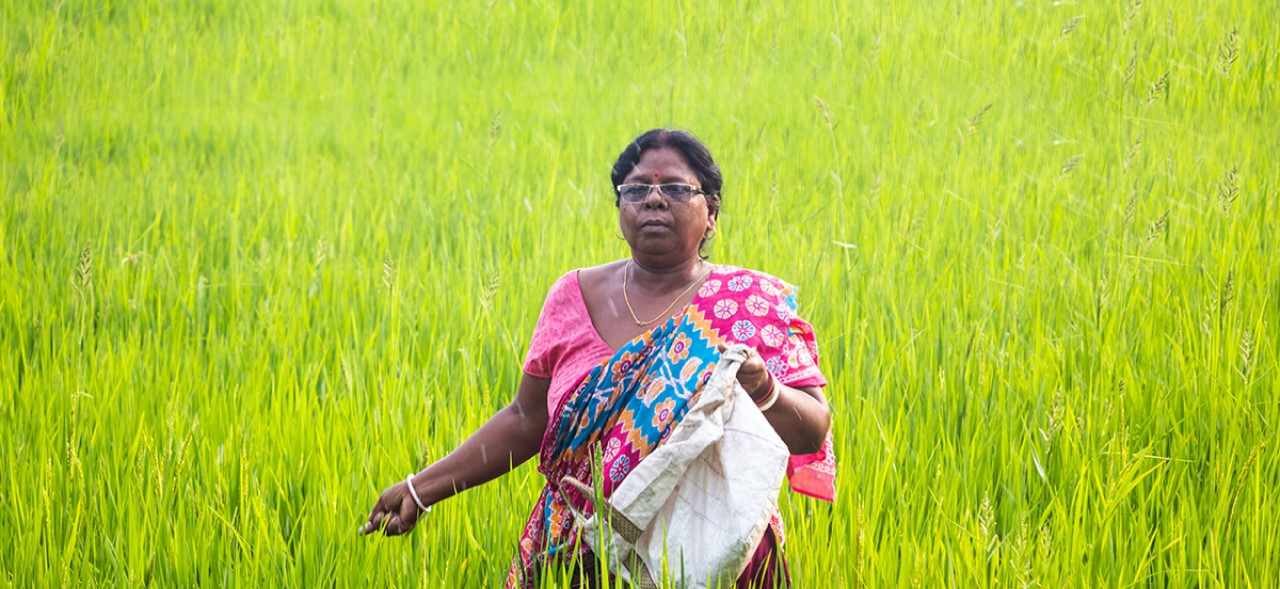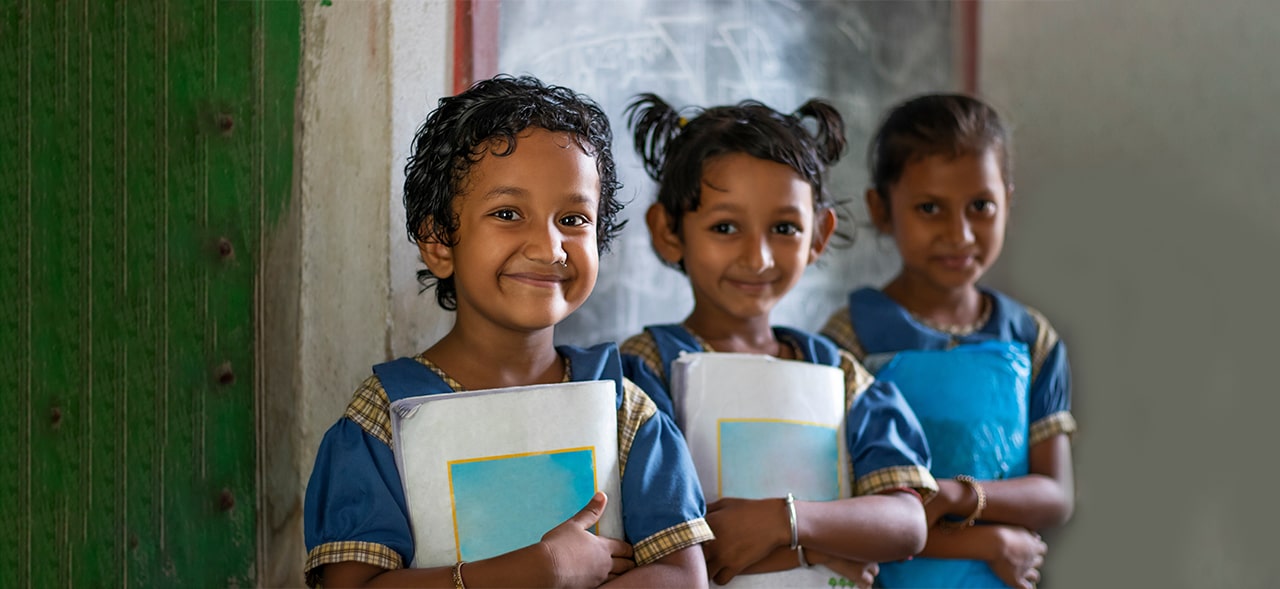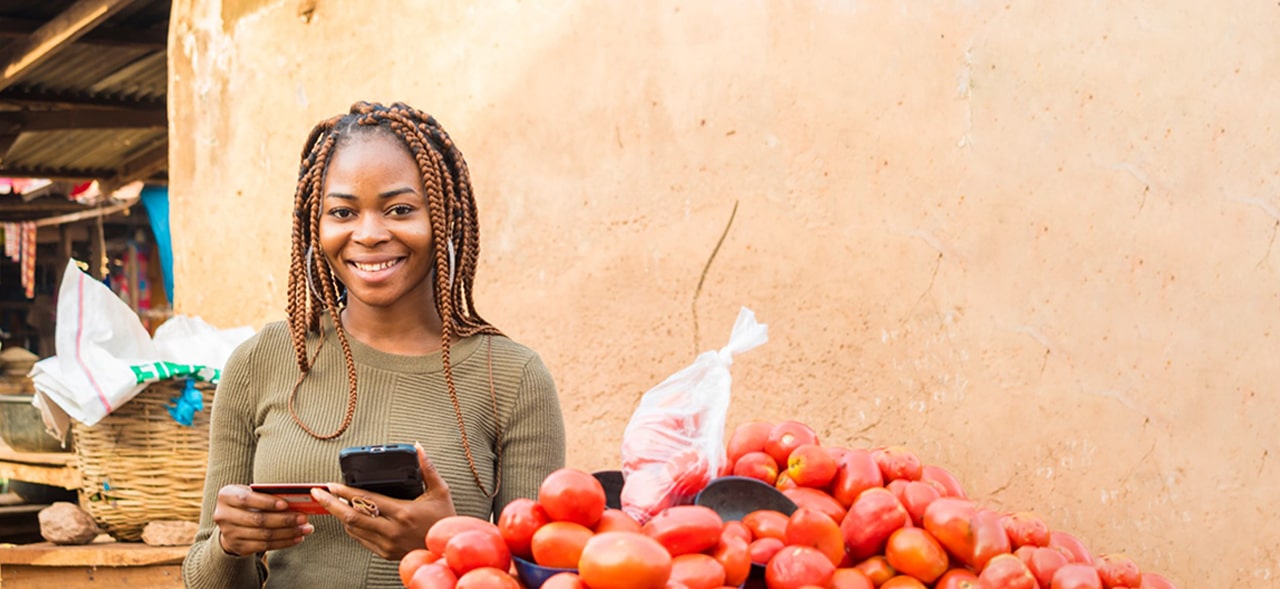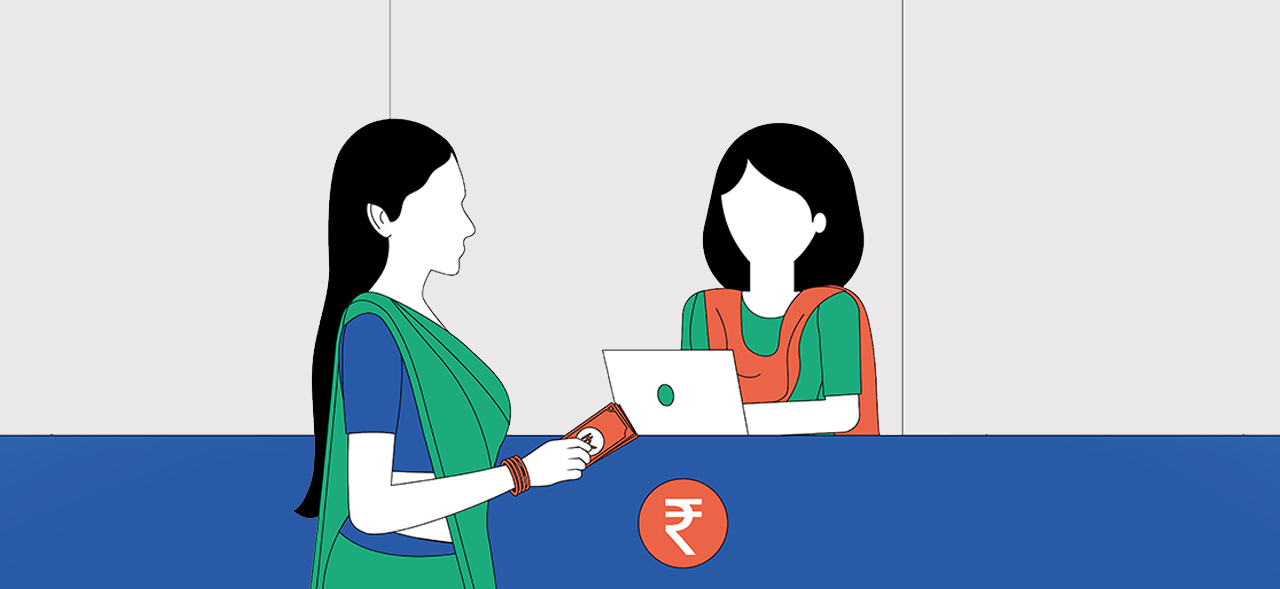This policy brief draws on global trends to understand how G2P programs can evolve to address India’s challenges. We look at how expanding beneficiary choice and inclusion while building resilience in social protection programs can bolster the impact of G2P programs. These include potential solutions to strengthen G2P programs, including incorporating mobile phones to deliver G2P funds, building a national database to monitor natural disasters, and creating a social registry to maximize inclusion for all.
Unlocking the potential of Farmer Producer Companies in Bihar: Insights from a diagnostic study
The formation of Farmer Producer Companies (FPCs) has gained significant momentum in Bihar. However, stakeholders do not fully understand their capacity, functioning, and challenges. MSC studied 35 FPCs across 10 districts in Bihar state to address this gap. The study yielded critical insights into FPC operations, management, and sustainability.
Revolution in a transition: How an intervention under India’s National Education Mission (Samagra Shiksha Abhiyan) is resolving long-standing challenges in education
MSC conducted an assessment with the Department of Basic Education in Uttar Pradesh, India, on the transition of the mode of delivering school supplies to primary and upper primary school students from in-kind to direct benefit transfer (DBT). The study intended to examine the effects of this transition on teachers, who expressed concerns about the excessive burden associated with facilitating the distribution of supplies in the previous in-kind mode. This briefing highlights the challenges teachers face and emphasizes how the DBT mode will prove transformational, enabling teachers and students to prioritize their respective academic goals.
Digital financial capability—using emotions to design content
We were in the middle of a digital financial capability (DFC) session in the Kerwari village of Jaunpur, Uttar Pradesh, India. Our team was conducting an interactive activity to help rural women understand how to make digital transactions using a mobile phone. In the middle of the activity, Revati, a participant, called out and asked us, “What is the use of teaching us all this when we all know is that we are scared of using mobile phones to make payments.”
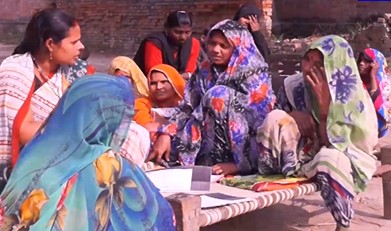

Figure 1: Picture from fieldwork in Kerwari village Figure 2: User interface prototypes for mobile applications, for activity purposes
Awestruck by Revati’s question, we brainstormed a possible solution after the fieldwork ended. However, it took us a while to realize that we might have to delve deeper to address some critical behavioral issues Revati brought to light.
MSC’s study and other studies also highlight the importance of behavioral biases in adapting financial services. One of the objectives of DFC interventions is to increase the user’s confidence in using digital financial services independently and skillfully. This confidence enables them to protect their money against fraud, safeguard their data, and understand and use digital interfaces.
Moreover, based on our experience working with multiple providers, we understand that providers focus considerably on increasing the user’s confidence by upgrading user knowledge and skills but often focus little on changing the user attitude. A user’s attitude includes attitudes toward accessing or using digital financial services (DFS) and their risks. It also includes attitudes toward a greater need for DFC after COVID-19. Therefore, a strategic focus on intuitive content design (detailed below) and compatible delivery (described in this blog) will help practitioners build better DFC interventions to change attitudes.
Research also reveals that attitudes based on emotions can stand the test of time, and these emotions are essential for financial decision-making. Emotional designs result in a positive user experience. DFC content with emotional designs nudges users to convert long-lasting attitudes or beliefs into actions. Don Norman mentions that the emotional system comprise three different yet interconnected levels, each influencing our experience in a particular way. The three levels are visceral, behavioral, and reflective, and DFC content that caters to all these levels should impact attitudes.
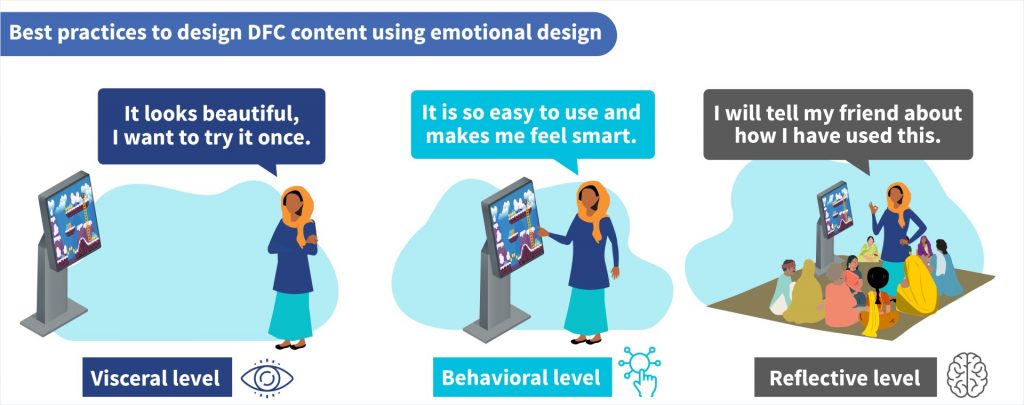
Figure 3: Best practices to design DFC content using emotional design
Level 1: Visceral
Visceral aspects form the first impression of the DFC content. Visceral aspects focus on appearance, including expressive colors, immersive sounds, and intuitive touch. The solution’s visceral quality establishes its first emotional connection with the target segment. The visceral design also helps build trustworthiness and gain traction from the target segment. For DFC interventions, visceral aspects are often presented as attractive and colorful animated videos, comic books, and cartoon strips. However, the target segment must relate to these representations, or they may lead to an instant emotional disconnect.
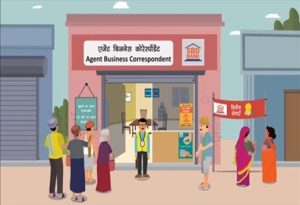 MSC used its years of experience of managing business correspondent (BC) outlets and a deep understanding of their needs to help personify characters and set context as per actual interactions for animation video designs. The video appearance immediately connects with BCs at a visceral level. These videos developed with funding from the World Bank are currently in use to train BCs registered with BCFI. BCFI is a federation with a membership of more than 200,000 BC agents in India that uses the platform to skill and re-skill agents.
MSC used its years of experience of managing business correspondent (BC) outlets and a deep understanding of their needs to help personify characters and set context as per actual interactions for animation video designs. The video appearance immediately connects with BCs at a visceral level. These videos developed with funding from the World Bank are currently in use to train BCs registered with BCFI. BCFI is a federation with a membership of more than 200,000 BC agents in India that uses the platform to skill and re-skill agents.
Level 2: Behavioral
The behavioral level is about usability. It refers to the content’s practical and functional aspects that help change behavior. Good behavioral design is like a lock and key. Customer behavior is the lock, content is the key, and harmony exists when the two work smoothly. Conventional DFC content focuses on imbibing behavior toward budgeting, opting for cheaper loans, or registering for insurance. However, the vulnerable income groups have volatile income and expenses. Therefore, financial decisions focus less on creating a stable budget and more on making ends meet.
MSC’s support to HFC Kenya resulted in the use of behavioral design to integrate DFC into its mobile banking application’s user interface. The MSC team used their proprietary Market-Insights for Innovation and Design (MI4ID) approach to redesign the menu options in the application, which focused on use-cases, such as borrow, invest, spend, store, and protect, making the user interface more intuitive. In addition, they simplified the interface with calculators to help budget for deposit and credit requirements so that the mobile application can also help improve customers’ overall financial health.
We can use a few high-impact emotional biases to influence behavior through DFC content design:
- The vulnerable segment is more sensitive to small losses than significant gains. Loss aversion explains why people deposit their money with local groups rather than banks. Thus, they avoid losing prospective financial support from their communities in times of need;
- Most financial service users exhibit status quo bias and are motivated to try DFS for the first time only when it negatively affects their reputation;
- The user seeks social proofing from a trusted person before using DFS;
- Scarcity bias is a predominant bias among the vulnerable segment leading to an ongoing struggle to deal with limited resources at the expense of planning long-term goals.
Please note this list is not exhaustive. We have listed only a few common behavioral traits of the LMI segment, and each customer segment has specific characteristics.
We use our understanding of behavioral science to develop interactive nudges or counter-arguments addressing behavioral biases. However, we must understand that the content’s usability differs widely among target segments. For example, the content presented as a gaming application may serve literate youth adequately, while a simple IVR-based solution can prove complicated for illiterate rural women. Read the next blog in this series to learn more about various channels for DFC programs in detail.
Level 3: Reflective
Reflective content is the highest level of a design’s emotional state, which helps the target segment instill a deeper meaning in the content as it directly impacts their System 2 thinking. The target segment consciously approaches the presented content, weighs its pros and cons, and extracts relatable information. This level also addresses deep-rooted fears among the target segment related to DFS and helps them identify how to overcome them.
We use heuristics to simplify complex decision-making to help target segments further rationalize the presented content. While developing content for a community-led DFC intervention, MSC developed a meaningful and straightforward rule of thumb to help entrepreneurs retain essential information, which translated to changes in how they use financial services. MSC also trained the Financial Service Providers (FSP) staff as mentors to help them use this rule.
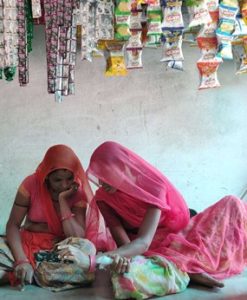 Jagruti is a volunteer-based low-cost DFC model currently piloted in a district of Uttar Pradesh, India, as part of an intervention by NITI Aayog.
Jagruti is a volunteer-based low-cost DFC model currently piloted in a district of Uttar Pradesh, India, as part of an intervention by NITI Aayog.
The pilot design includes the following:
- Carefully crafted prototypes for experimentation. See women participating in an ATM prototype exercise in the picture on the right.
- Content aligned to overcoming cultural fear by disseminating content through activities for the group to solve, helping inculcate DFS usage into daily lives.
Further, the pilot is expected to help build confidence among low-income women and the farmer population for DFS usage.
A DFC intervention that incorporates all three emotional design levels into the content of the DFC solution can help users like Revati absorb DFC content better for the effective use of DFS. Therefore, an ideal DFC intervention will include an attractive, easy-to-use solution incorporated into daily chores. The intervention should focus explicitly on incorporating social proofing to address the fear of conducting DFS transactions for Revati and countless others like her.
Read our next blog that identifies appropriate digital channels to disseminate DFC content that triggers all levels of our emotional system.
How can digital public infrastructure improve government-to-person payments?
In Sub-Saharan Africa, millions of impoverished, at-risk individuals struggle to access essential services, such as banking, agricultural financing, and social protection. The COVID-19 pandemic has underscored the urgency of digitally delivering these services, ensuring support for individuals, businesses, and governments. Imagine living in their shoes as you navigate a world where these resources are crucial to survival.
Now imagine these services are all connected in a digital ecosystem. They are scalable, innovative, and inclusive for all. What is the cornerstone for such a digital revolution? The answer is digital public infrastructure.
Why is DBTs crossed?
Digital public infrastructure or DPI refers to digital solutions and systems that enable the delivery of society-wide services to citizens and businesses in a secure, reliable, and democratic manner. We may compare DPI to physical public infrastructure, such as highways, which facilitate travel to benefit citizens, businesses, and governments. Similarly, a repository of authentic and verifiable beneficiaries of government-to-person (G2P) payments is a DPI. It digitally enables the G2P social benefits to eligible citizens.
The implementation of DPIs has grown significantly in the past few years and enabled countries to achieve digital inclusion and empowerment for their citizens. DPIs have also created opportunities for new business models, social innovations, and public service delivery. In the coming years, they are likely to see significant growth.
DPIs are most effective when they interoperate with other systems, serve the evolving needs of their users, protect the privacy and security of users’ information, and promote innovation on top of foundational systems.
DPIs underpin a robust and inclusive digital ecosystem, and its three essential pillars are identity, data exchange, and payments. Digital identity captures citizens’ information, which uniquely identifies and authenticates them. Data exchange facilitates secure and prompt information sharing across systems. Payment systems enable seamless financial transactions. In an inclusive digital ecosystem, these three pillars help governments deliver benefits or services seamlessly to eligible citizens in an open and transparent manner.

India’s digital public infrastructure
India illustrates how combining DPI’s pillars can effectively digitize G2P payments. Aadhaar, India’s foundational digital identification system, has 1.365 billion users—more than 90% of the country’s population. It captures each user’s information in a unique 12-digit ID number. The unique number’s information is shared using data exchange with service providers to enable services, such as bank account opening.
Aadhaar-enabled bank accounts (AeBA) then interoperate with the Aadhaar-enabled Payment System (AePS) to authenticate Direct Benefit Transfer (DBT) beneficiaries. Then, another payment system, the Aadhaar Payment Bridge (APB) system, uses the Aadhaar number as a central key to send social benefits to the intended beneficiaries’ AeBAs. DBTs are subsidies paid directly to their beneficiaries’ accounts. Three hundred eighteen programs from 53 ministries use DBT, which accounted for 5.94 billion transactions worth a combined INR 6.24 trillion (USD 76.34 billion) in FY 2022-23.

The LPG (cooking gas) subsidy program benefitted from DPIs. The government linked subsidies directly to their beneficiaries’ bank accounts with MSC’s technical assistance. This linkage removed about 35.6 million duplicated or “ghost” beneficiary accounts from the LPG program and saved the Indian government USD 3.23 billion. The government redistributed these savings to its Pradhan Mantri Ujjwala Yojana (PMUY) initiative, which benefits nearly 90 million households.
Kenya’s digital public infrastructure
Kenya’s National Safety Net Program, commonly known as Inua Jamii, is an example from East Africa to illustrate the potential for digitized G2P payments through DPI’s three pillars. Inua Jamii is an umbrella program for various transfer programs that use selected payment service providers (PSPs) to transfer social protection to beneficiaries.
Before the payments can be disturbed, the PSPs use digital identity to authenticate beneficiaries via biometric data and national ID cards. This authentication uses data exchanged between Kenya’s Single Registry, which unites beneficiary information from all Inua Jamii’s programs and its Integrated Population Registration System (IPRS). Additionally, the registry collects beneficiaries’ data during the programs, such as registration, enrolment, payments, and grievance management records. It serves as an intermediary between these programs and the IPRS.

Digital payment systems enable fund transfer from the National Treasury to the State Department for Social Protection’s Social Assistance Unit to each selected PSP and finally to the beneficiaries’ accounts using Kenya’s electronic payments infrastructure. The unique combination of these DPIs is relatively new, yet significantly, it helped the Kenyan government disburse KES 8.54 billion (USD 62.94 million) to 1.07 million beneficiaries in January 2022.
Zambia’s digital public infrastructure
Zambia’s government digitized cash-based interventions (CBI) for refugees in the Meheba Refugee settlement camp in collaboration with UNHCR, UNCDF, and MSC. The initiative registered eligible beneficiaries with SIM cards and provided them with digital wallets and PINs. Their mobile numbers and digital wallets were updated in ProGres, the government refugee database, which authenticated them before they received payments through the digital wallets.
Digitized CBI was pilot tested after MSC assessed the previous method’s challenges. Upon its implementation, 52% of CBI payments occurred using digital wallets. The distribution time was reduced from an average of 13 days to 2.5 days. This model is now used to digitize most refugee payments in Zambia.
Nigeria’s DPI opportunities
Sub-Saharan Africa offers many opportunities for DPI-enhanced G2P payments, as illustrated by Nigeria’s National Social Safety Nets Project (NASSP), which contains various G2P programs. These programs store the information of their 61.6 million eligible beneficiaries in a National Social Registry (NSR). NASSP beneficiaries can be authenticated using various IDs, such as national identification numbers (NINs), state-level IDs, or bank verification numbers (BVNs), using each ID’s corresponding ID database. Then the National Cash Transfer Office (NCTO) transfers funds to select financial service providers (FSPs) via the Remita e-payment system. These FSPs credit virtual accounts that beneficiaries must cash-out from using NFC (near-field communication) cards and QR codes.
NASSP’s process has specific core infrastructural challenges. NASSP lacks a standardized ID authentication process. Nigeria’s bank verification numbers are not fully integrated into its foundational ID—the NINs. If BVNs were NIN-enabled, they could be used to open accounts for beneficiaries. Furthermore, if the NIN’s database, which has 97.5 million users, were linked to the NSR, it would streamline beneficiary authentication through data exchange between NIN, NSR, and the BVN, which has 57 million users.
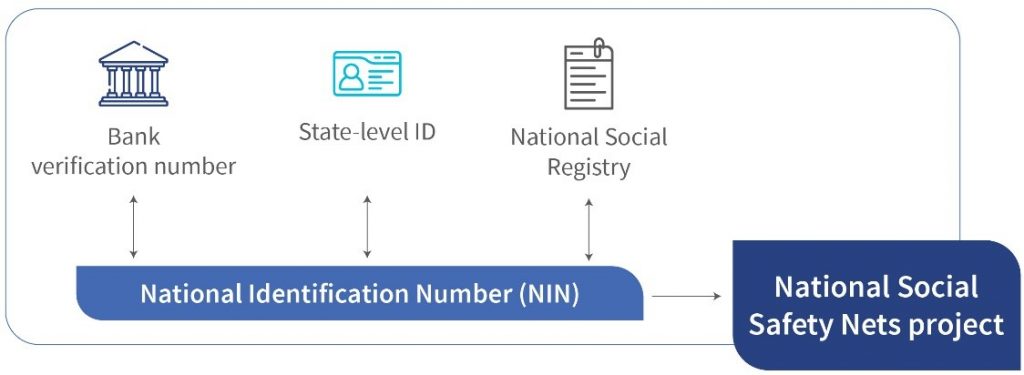
Lessons, challenges, and the way forward
Cases from Sub-Saharan Africa, South Asia, and Southeast Asia provide insightful lessons on the challenges within DPI-enabled G2P payments, which could help build an understanding of how DPIs can improve G2P payments. Various technologically capable parties, including government bodies, must collaborate to deliver these payments. While agent networks can provide vital assistance, G2P beneficiaries should ideally be digitally literate and equipped to receive and use payments. However, payment delivery must suit their needs and preferences.
Governments must combine identity, data exchange, and payment solutions to implement DPI-enabled G2P payments across Sub-Saharan Africa effectively. Digital identity must capture eligible beneficiaries’ information. It must combine with data exchange to integrate this information into national identity databases and authenticate these beneficiaries. Data exchange must connect with payment systems for financial service providers to give beneficiaries digital accounts that receive G2P payments. Governments and their partners must assess beneficiaries in the initial design and evolution phases, as MSC did for Indonesia’s largest digitized G2P initiative, Bantuan Pangan Non Tunai (BPNT). Additionally, governments must collaborate with the best partners to execute each phase of this process, both from the public and private sectors.
This blog raised the need to digitize G2P payments and other services for millions of impoverished individuals. In India, Indonesia, Kenya, Nigeria, Zambia, and across Sub-Saharan Africa, evidence shows that DPIs have been and will be vital to this. Solutions providers are creating DPIs, service providers are implementing them, and thought leaders are analyzing and technically assisting with them. It is time for all the players to come together, maximize their collective understanding and usage of DPIs, and create the digital revolution the impoverished millions desperately seek.
Voices of India’s MSMEs: Insights notes from the diaries access to finance
The third in this series of notes, Insights note-Edition 3, covers aspects related to the status of access to finance among India’s informal enterprises (IEs). Despite several initiatives by the Government of India, access to finance remains a critical issue among IEs due to several challenges that this note delves into.
The note discusses examples from MSC’s Financial Diaries research on IEs to validate the findings. It also provides recommendations for policymakers and financial service providers to address the credit gap for IEs.
